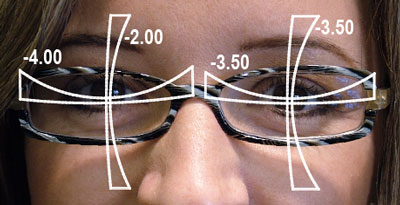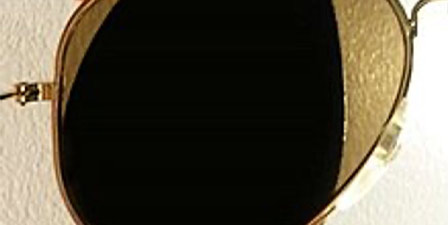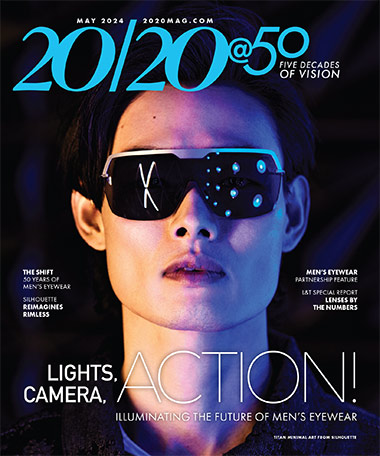
|
It starts with the prescription. The prescription (Rx) describes the patient's Refractive Error. Any Prism needed for the eyes to work together and an Add if needed for near vision / reading.
The prescription or lens formula is the starting point for recommending the best lens material and for guiding frame size and shape selection. The axis describes the meridian (or direction) of lens powers needed in the frame in front of the eye. Here's how it works. Zero degrees is always on the left of each of the patient's eyes, 90° is up and 180° is on the right. This is the same for both the right and left eyes and is called TABO notation. Axis is described in 1 degree steps from 1 to 180 degrees. There is no need to describe axes greater than 180 since everything that happens above the 180 line also happens below the 180 line.

The eye may have a simple prescription, sphere power only or a compound prescription, a sphere and cylinder power. The position of the cylinder will be described by an axis. The prescription can be dissected to know where powers are located. This is helpful when determining how the Rx will look in the chosen frame size and shape.

The Rx R -2.00-2.00 x 90 fits the patient like the lens above i.e., the -2.00D power is at the axis or 90 degrees and the sum of the sphere and cylinder power is 90 degrees from the axis, -4.00D at 180 degrees.
Practice: look at and analyze every Rx that you see. Imagine where the power is at the axis, 90 degrees from the axis and what that will do to the appearance of the edge of the lens.












